You’re backpacking Cuba for a month.
Where do you go?
It’s a fantastic destination, but travelling solo in Cuba can be daunting. Here’s everything I learned about backpacking Cuba during my four weeks there.
My visit to Cuba was something of a spontaneous decision. I’d been working as a journalist in Medellin, Colombia when the idea of a month travelling around this intriguing island sprung up – so in true Flora fashion, I did barely any research before I arrived.
As a result, the way I ended up backpacking Cuba was a mishmash of recommendations from friends, fellow travellers and local Cubans. During a month of travelling I visited eight different cities, criss-crossed the island on six long-distance public bus journeys, and had a month-long glimpse of how to travel Cuba as a solo female.
I’ve written lots of stories about my time backpacking Cuba, but I also know how useful a solid travel itinerary can be to inspire your trip – particularly for a country like Cuba.
So here’s my Cuba travel itinerary at a glance. I hope you find it helpful!
Check out my guide to travelling Cuba on a budget
What transport did I use to get around Cuba?
During one month in Cuba, I travelled between every city on the public tourist bus network. Despite my concerns about the buses in South America, Cuba’s buses are actually very comfortable.
There are two main bus companies in Cuba – Viazul and Transtur. I didn’t see much difference between them: both have air conditioning, a bathroom on board and comfy reclinable seats; they usually show up and leave on time; and they have connections in all of the major cities and smaller towns that tourists might want to visit.
There are usually a few departures per day between each destination, but it’s necessary to check how long the journey takes and what time they depart.
Buying tickets isn’t a stressful process (although it helps if you can speak some Spanish), so booking ahead of time at the bus terminal is advisable. In smaller towns and cities like Trinidad and Viñales the terminal will be in the city centre, but you might have to venture further afield in Havana and Cienfuegos.
It’s also possible to book bus tickets online, although I never tried this. I’d suggest getting your tickets in person though: most of my tickets were handwritten by a grumpy station attendee who I tried valiantly to make an impression on so they’d remember me for my journey the next day!
Bus travel in Cuba: routes and prices
NB: all prices in this article are in Cuban CUC (the tourist currency used in Cuba), because the exchange rate in Cuba is fixed at 1CUC to $1 in US Dollars.
These are the bus journeys I took around the island. I’ve also listed alternative routes when discussing each destination.
Havana – Vinales: 12CUC (3.5 hours)
Viñales – Cienfuegos: 32CUC (8 hours)
Cienfuegos – Trinidad: 6CUC (1.5 hours)
Trinidad – Santa Clara: 8CUC (3 hours)
Santa Clara – Sancti Spiritus: 6CUC (1.5 hours)
Sancti Spiritus – Camaguey: 10CUC (3 hours)
Camaguey – Havana: 33CUC (9 hours)
Travelling Cuba by taxi
If you’re happy to flash a bit more cash, the taxi network across Cuba is relatively good value. There’s an abundance of shared taxi colectivos and of private-hire taxis throughout the island – and if you’re in a group, the combined cost for a taxi is often equal to a bus fare.
The only issue with taxis is being at the mercy of an individual car’s condition. On my second visit to Cuba, we hired a driver for the day to take us from Havana to Viñales and back in a hot pink convertible. Driving through the countryside with the roof down was fantastic – until the return journey after sundown, when we realised the roof didn’t actually work. We spent the six hour ride getting steadily more freezing, and also ran out of gas an hour from Havana with no gas stations in sight!
Driving your own car in Cuba
Although I didn’t hire a car in Cuba (it’s my own fault for not having a driving licence), it’s a popular choice for many tourists. If you’re hoping to drive around Cuba in a cool vintage car though, you have to arrange your car hire well in advance!
You’ll also need to be over 21 and purchase local insurance for every day you’re renting the vehicle.
- Check out ‘Best Cuba Travel Guide’ for their advice on car rentals
- ‘Havana Autos’ is a good resource for calculating distances between various destinations in Cuba
A four week Cuba travel itinerary
Days 1–3: Havana
How do I even begin to explain Havana? Even after two visits to Cuba, I’m still unsure whether I’ve got to grips with its capital city – but I know I’d love to explore more and find out.
When I first arrived in Havana I felt a little overwhelmed. There’s so much going on: the heat, the markets, the cramped streets and the constant noise of shouting neighbours, blaring car horns and impromptu street parties.
Then I realised that Havana’s outward way of life is exactly what makes it so exciting. You’re always surrounded by brightly coloured outfits and paintings and cars and buildings; there’s always someone shouting a friend’s name or trying to sell you cigars; your interest is always piqued by a man slinging two slippery fish over his shoulder with a giant metal hook, or a group of elderly men playing dominoes in the gutter, or an argument between two costumed buskers standing high on wooden stilts.
To put it simply, Havana is like nowhere else I’ve ever been.
What to do in Havana, Cuba
You’ll never be unoccupied in Havana. Amongst its myriad of tightly-squeezed-together streets are hundreds of art galleries, museums, restaurants, hotels and historical buildings: so many that the first step is accepting you’ll never see everything Havana has to offer!
Over two trips to Cuba I’ve spent a couple of weeks in Havana, and these are some of my favourite experiences so far:
Learn Cuba’s history in the Museo de la Revolucion. Inside the building are collections of objects explaining Cuba’s tumultuous history with Fulgencio Batista’s dictatorship, but the real attention draw is outside, where vehicles from the Revolution are displayed – including the infamous Granma Yacht, which brought Fidel Castro and his men ashore after their exile in Mexico in 1952.
Havana is a haven for museums. Apart from the big players like the Revolutionary Museum and Havana Club Rum Museum (both of which I highly recommend) there are lots of wonderfully weird little museums which are free or cost just a couple of CUCs – and most have air conditioning, which can be a godsend in the heat! Some of my favourites include the Playing Card Museum, the Chocolate Museum (a tiny factory complete with free samples), and the Firefighters Museum, which is housed in an old fire station and displays equipment and vehicles from times gone by.
Looking to Che in the Plaza de la Revolucion. The plaza itself is little more than a large square of tarmac, but it does claim to be one of the biggest central squares in the world – and the towering steel-sculpted outlines of Che Guevara and Camilo Cienfuegos on two building facades are extremely impacting.
Wander along the Malecon. This boardwalk is the perfect place for a stroll: it stretches along the seafront for miles, and at night it’s full of busking musicians, flower sellers, groups of friends and loved-up couples. If you’re not feeling the walk, simply stick your hand out and a flurry of convertibles, posing as taxis, will stop and drive you the rest of the way.
Browse the Plaza de Armas secondhand book market. If you’re anything like me and love yellowing photographs, rusting metallic badges and colourful old posters, every stall in this market is a goldmine. You can pick up Communist trinkets of all sorts – I even found an old comic book which explains Che’s history to kids!
Explore Morro Castle. Across the water via a short ferry journey is this castle, which guards the entrance to Havana Bay. Nowadays it houses a small museum and offers some cool respite from a sweaty Havana day in the shady grounds, along with good views of the city.
Discover Ernest Hemingway’s apartment in Hotel Ambos Mundos. Cuba is filled with Hemingway-related activities, as the writer had a long love affair with the island and spent much of the later years of his life here. If you find the queues at Casa Floridita too intimidating and can’t trek to Hemingway’s villa, Finca La Vigia, a few miles outside of the city, head to the fifth floor of Hotel Ambos Mundos. Hemingway had a long-term tenancy in Room No.511, and a quick tour around the room shows various first editions of his books, as well as his glasses, a typewriter and framed photographs.
Wander the streets of Havana. There aren’t many cities in the world with as much frenzied streetlife as Cuba’s capital, so simply getting lost in the fray is a worthy experience all of its own. Some of the streets with most activity include Calle Oficos, Calle Obispo and Calle Mercaderes – all located in Habana Vieja (the old town), they feature a slew of live music, plenty of shops and an all-day party vibe.
Read about my first impressions of Cuba here
Getting to Havana
The vast majority of tourists visiting Cuba will fly into Havana’s José Martí airport. It’s 20km from the centre of Havana so a taxi ride takes between 20-30 minutes and costs 20CUC (unlike most airports, there’s no reliable bus or train network to transport travellers to the capital).
Havana’s Viazul bus station is in the Nuevo Vedado district on Calle 26. Taxis should charge between 5-10CUC to central Havana.
Days 4–7: Viñales
Three days in Viñales is enough to get a feel for this sleepy, sun-soaked part of Cuba. It’s everything Havana isn’t: straw-hat-wearing farmers riding their horses in thick rubber boots through wide open landscapes of deep red earth and past strange bulbous limestone formations called mogotes.
The only unequivocal reminder that I was still in the same Cuba was being offered shots of local rum everywhere I went.
What to do in Viñales, Cuba
Despite the wonderfully relaxed attitude of this part of Cuba, Viñales hasn’t missed a trick when it comes to tourism. Thanks to a glowingly positive Lonely Planet write-up a few years ago, tourists now flock to this patch of farmland close to Havana – and there’s plenty on offer to keep you occupied.
The most obvious pastime is to take a cigar tour. Viñales is located in the Piñar del Rio province of Cuba, which produces 70% of Cuba’s tobacco as the farmland is abundantly fertile.
Dozens of farmers will show you around their tobacco plantations, inside their various secadero smokehouses to explain the tobacco drying process, and eventually sit you down with an accomplished cigar roller who’ll deftly create a cigar you can smoke just moments afterward. Don’t forget to buy some more to take home – UK citizens are allowed to bring back 50 cigars from Cuba.
You can read more about the cigar making process in Cuba here
Horse riding is also a popular way to spend your time in Viñales. I spent an afternoon ‘riding’ a horse (ie. walking very slowly) with a group of friends and a guide, past the secaderos and onward into the landscape beyond. At the entrance to Gran Caverna de Santo Tomas – Cuba’s largest cave system – we hopped off our horses and took a guided walking tour though narrow underground chambers, replete with colonies of bats and glinting underground pools.
It’s easy to rent a car and drive to a number of beaches nearby. There are plenty of secluded swathes of sand along the shoreline. Just make sure you have enough gas in the tank, as petrol stations are few and far between!
Go walking. One afternoon I took myself off into the red landscape and went wandering, amazed by how much solitude was available so close to the madness of Havana. I found a family of snoring pigs in the dirt, got caught in a rainstorm and watched the earth swirling into ochre dust under fat droplets of water.
But honestly, my favourite activity in Viñales was simply allowing the place to wash over me. I spent hours people-watching from a rocking chair on my casa host’s porch: it was opposite the baseball field so there were always passersby who my adopted Cuban grandpa was friends with, and we spent a happy afternoon waving to everyone he knew and pointing at the gathering storm clouds above us.
Getting to Viñales
I took a bus at 2pm from Havana to Viñales, which cost 12CUC and took 4 hours. There are two other departures at 8.40am and 11.25am.
Buses arrive and leave from the Viñales ticket office, on one side of the town’s central plaza.
Other routes to Vinales include:
- Varadero to Viñales – costs 22CUC, takes 7 hours, departs 8am
Days 8–10: Cienfuegos
Cienfuegos isn’t on every Cuba tourist’s list, but it should be. This is the only Cuban city to be colonised by the French instead of Spaniards in the 1800s, and the architecture reflects that classical French flair.
When I arrived, the skies above Cienfuegos were threatened by the presence of an impending thunderstorm. It meant my impression of the city was all dark swollen clouds and a sense of drama. I loved it.
What to do in Cienfuegos, Cuba
Wander beneath the Arco de Triunfo. Dedicated to Cuba’s independence and built voluntarily by city workers, there’s no other building like this little pink arch on the island. Close by is a marble statue of Jose Marti, Cuba’s infamous revolutionary hero, and soon you’ll realise you’re in Parque Jose Marti – complete with a bandstand and free wifi! Lots of people hang out here at night so it’s a good people-watching spot.
Visit Cementerio la Reina. There are quite a few cemeteries in Cienfuegos, but this one is the city’s oldest and holds the graves of Spanish soldiers from the Wars of Independence.
Take a tour at Teatro Tomas Terry. This grand old theatre has both an Italian and French influence, and is filled with ornate decorations, smooth marble, ceiling frescoes and mosaics of gold leaf. You can take a short tour and imagine performers gracing the stage in years gone by.
Have a drink at Palacio de Valle. This historic villa is located on the Punta Gorda peninsular, a wealthy neighbourhood which sits by the water. It was built in 1917 and now acts as a restaurant and terrace bar.
Interact with local Cubans. As we wandered under broody dark grey skies, we traded short conversations with old men on street corners with their string vests rolled up; with an elderly woman through the bars on her front door as she recited her favourite poetry to us; with a rickshaw driver who told us Cienfuegos was the safest city in Cuba then wanted to take us clubbing. At my chosen casa particular, I watched telenovelas with the family’s granny and played dominos in the shady garden with the neighbourhood granddads while the family parrot squawked irritably and planes to Miami flew overhead.
Getting to Cienfuegos
I took a 6.45am bus from Viñales to Cienfuegos, which cost 32CUC and took 8 hours (there’s only one bus driving this route each day, so it’s advisable to book it ahead of time).
The Cienfuegos bus station is on Calle 49, between Avenidas 56 & 58.
Other routes to Cienfuegos include:
- Havana to Cienfuegos – costs 20CUC, takes 4 hours, departs 7am, 10.45am and 2.15pm
- Trinidad to Cienfuegos – costs 6CUC, takes 1.5 hours, departs 7.30am, 8.15am, 3pm and 4pm
Days 11–15: Trinidad
Five days may feel like a while, but Trinidad is one of those Cuban cities where time slips easily away from you. It’s a compact and colourful town with plenty to keep you occupied, from little art galleries and street markets to climbable clock towers and an underground disco cave.
Yep, I did say ‘underground disco cave’…
What to do in Trinidad, Cuba
Art galleries are everywhere. Most have an open door policy so you’ll find yourself accidentally wandering in to watch an artist casually painting scenes from everyday life.
Go museum spotting. Just like every city in Cuba, Trinidad has plenty of museums. I enjoyed the Santeria museum – a tiny white-painted room with a Santeria altar to Yemaya – and the Maqueta de Trinidad, which holds a scale model of Trinidad’s historical district in beautiful detail.
Visit the Valle de Los Ingenios. Just outside of Trinidad is the Valle de Los Ingenios, a stunning valley which once fuelled the country’s sugar industry. Nowadays the ruined 19th century sugar mills are all that’s left – but they’re still fascinating places to explore. I headed to the Manaca Iznaga sugar estate and climbed up the old 44-metre-high bell tower to gaze across the valley.
Eat the biggest pizzas at San Jose Paladar restaurant. Just take my word for it!
Spend the evening in Plaza Mayor. The many bars and restaurants which spill out onto the stairs beside Iglesia Parroquial allow you to get a prime position for the evening’s entertainment, like the 10pm salsa show which kicks off each night.
Go clubbing in an underground cave at Disco Ayala. Walking distance from the city centre is a small hill with steps that go into the ground. Once you pay an entry fee to the bouncer, you’ll find yourself inside a cave-club which is a bit tacky but is still worth visiting for the location alone! Be forewarned: there’s little to no street lighting on the way, so take a torch/your phone light.
Getting to Trinidad
I took a 11.40am bus from Cienfuegos to Trinidad, which cost 12CUC and took 2 hours. There are two other departures at 2.30pm and 4.05pm.
The bus station in Trinidad is at Piro Guinart No224.
Other routes to Trinidad include:
- Havana to Trinidad – costs 25CUC, takes 6 hours, departs 7am, 10.45am and 2.15pm
- Varadero to Trinidad – costs 20CUC, takes 6 hours, departs 7.25am
- Viñales to Trinidad – costs 37CUC, takes 9.5 hours, departs 6.45am
- Santa Clara to Trinidad – costs 8CUC, takes 3.5 hours, departs 10.30am and 5.15pm
- Camaguey to Trinidad – costs 15CUC, takes 4.5 hours, departs 2.45am
- Santiago de Cuba to Trinidad – costs 33CUC, takes 11.5 hours, departs 7.30pm
Days 16–19: Santa Clara
If you’re in Cuba to learn more about Che Guevara and the Cuban Revolution, come to Santa Clara. The city is is famously known as the place where the Cuban Revolution was won in 1958, and that fiery energy still exists here: as a university city, it’s filled with headstrong students and a wealth of cultural happenings including the country’s best rock festival and Cuba’s only official drag show.
What to do in Santa Clara, Cuba
See Che Guevara’s mausoleum in Plaza de la Revolucion. The central plaza of Santa Clara is home to the Che Guevara Mausoleum, a memorial which holds the remains of Ernesto ‘Che’ Guevara. He’s interred alongside twenty-nine of his fellow combatants, all of whom were killed in 1967 during an uprising in Bolivia. There’s also a bronze statue of the man himself, accompanied by the transcribed text of the farewell letter he wrote to Fidel Castro.
Learn about revolutionary history at Monumento a la Toma del Tren Blindado. This little group of train carriages – and a bright yellow bulldozer – may not look like much, but they sit on the site of the most important battle of the revolution. In December 1958, Che and a group of fighters derailed an armoured train filled with Batista soldiers using Molotov cocktails and a borrowed bulldozer, and thus ended the country’s dictatorship. Cuba became a Communist state just days later.
Walk the trail of everything Che. There’s much more Che to see in Santa Clara, if you’re so inclined. At the Mausoleum there’s also a museum with objects from his early life, including family photos, his doctor’s coat, his dentist equipment, his binoculars, and the chess set he played with while hiding in the Sierra Maestra. Outside the Oficina de la Provincia stands a lifesize statue of him holding a baby, along with hundreds of tiny statues of his troops, friends and pivotal moments of his life. And as you walk around the city, you’ll notice variations of his name on street signs and shopfronts.
Search out the political street art. You’ll see so much graffiti and street art all over Cuba, but it steps up its game in Santa Clara. The city is home to Melaito, a magazine which has published satirical cartoons and caricatures for the last 50 years. There’s tons of provocative pieces all over the city, and even a whole building dedicated to a constantly rotating set of cartoon murals – head to Carretera Central between Vidaurreta and Carlos Pichardo to see them.
Tour of the Constantino Perez Carrodegua tobacco factory. One of the best cigar factories in the country, it costs 4CUC for a guided tour and is well worth the visit (although unfortunately photography isn’t allowed). Make sure you check ahead of time as their opening hours can be confusing.
Buy cigars and rum at La Veguita. This little shop is opposite the tobacco factory and has a huge range of cigars and rum on offer at good prices. There’s even a little bar at the back with really good coffee!
An evening spent in Parque Vidal. Hanging out in the central plaza watching tiny children riding tinier ponies before eating their weight in candy floss and popcorn is a good way as any to spend the evening!
Dinner at Casa Florida Center. I ate lobster here two nights in a row and still don’t regret it. Casa Florida Center is a stunning little oasis of a restaurant (and casa, if you can manage to book a bed!): it was built in the 1800s and has an eclectically decorated open-air courtyard filled with plants, old clocks, vintage Cuban posters and little knickknacks. Plus their food is divine. Head to No.56, Calle Maestra Nicolasa, between Colon and Maceo.
Getting to Santa Clara
I took a 7.30am bus from Trinidad to Santa Clara, which cost 8CUC and took 3 hours.
The Terminal de Omnibus Nacionales, where all Viazul buses go from, is 2.5km west of the city centre on the Carretera Central.
Other routes to Santa Clara include:
- Havana to Santa Clara – costs 18CUC, takes 4 hours, departs 12.30am, 6.30am, 9.30am, 3pm and 7.45pm
- Varadero to Santa Clara – costs 11CUC, takes 3 hours, departs 7.25am and 9pm
- Cienfuegos to Santa Clara – costs 6CUC, takes 1.5 hours, departs 8.35am and 3.30pm (on the Varadero bus)
- Trinidad to Santa Clara – costs 8CUC, takes 3 hours, departs 7.30am
- Santiago de Cuba to Santa Clara – costs 33CUC, takes 12.5 hours
Read about my attempts to learn more about Che & his Communism in Santa Clara here
Days 20–21: Sancti Spiritus
The sleepy little town of Sancti Spiritus is a joy to wander around. It feels a bit like Toytown: brightly painted buildings which look squat and adorable; plenty of old men with fantastic hats sitting on benches and chilling out; and an easily navigable town centre, complete with narrow cobblestone streets.
If you’ve faced any hassling from the touts in Havana or nearby Trinidad, rest assured that Sancti Spiritus is blissfully ‘untouristy’ enough to be hassle free. The one full day I spent here mostly involved my favourite activity in a new place: wandering around with a camera, getting myself lost and chatting in Spanish to people.
What to do in Sancti Spiritus, Cuba
Puente Yayabo. This old bridge in the south has four arches and is the city’s signature sight. There’s a great viewing spot from Taberna Yayabo – or you can just wander along the street like I did!
Chill out in Parque Serafin Sanchez. This little square in the centre of town is a great place to people-watch.
Visit the Iglesia Parroquial Mayor del Espiritu Santo. The city’s adorable blue-painted church was originally constructed in 1522 but recently underwent a renovation for Sancti Spiritus’s 2014 anniversary celebrations. Local Cubans are rightly very proud of their church, as it’s said to be the oldest original church in the country.
Explore the Fundacion de la Naturaleza y el Hombre museum. This place documents a canoe expedition of 17,400km from the Amazon to the Caribbean, which was undertaken in 1987 by a group of explorers and led by a Cuban writer named Antonio Nuñez Jiménez.
Getting to Sancti Spiritus
I took a bus from Santa Clara to Sancti Spiritus, which cost 6CUC and took 1.5 hours.
The bus station in Sancti Spiritus is 2km east of town on the Carretera Central.
Other routes to Sancti Spiritus include:
- Havana to Sancti Spiritus – costs 23CUC, takes 6 hours, departs 12.30am, 6.30am and 3pm
- Trinidad to Sancti Spiritus – costs 6CUC, takes 1.5 hours, departs 8am (on the bus to Santiago de Cuba)
Days 22–24: Camaguey
Camaguey is the third largest city in Cuba, and it’s well known for its maze-like street layout – legend says it was purposefully designed that way after repeated pirate attacks in the past. It’s easy to head out exploring: there are plenty of plazas, restaurants, art galleries and bars, and it has the same faded grandeur vibe as Havana. The downside is there are more hustling jineteros to contend with.
I’ll be honest though: by the time I reached Camaguey I’d had enough of travelling solo in Cuba. Thanks to sheer exhaustion and July’s sweltering temperatures, I spent much of my two days in Camaguey in my air-conditioned casa room, reading on my Kindle and planning my final two days in Havana.
Luckily, the other guest at my casa was an Ecuadorian-American who seemed very keen to spend all night dancing, so in the evenings we ended up in various Camaguey bars in half-ruined buildings (something the city is famed for). He also had a few friends in town so there was a lot of salsa, rum and general night-time frolicking.
What to do in Camaguey, Cuba
Wander through Plaza del Carmen. There are a selection of life size statues sitting on benches, pushing carts and reading newspapers, which make great photo-posing partners!
Explore Camaguey’s answer to Hollywood. Close to the main shopping street of Calle Maceo is a stretch of cinemas and movie-related stores – which explains why Camaguey hosts an International Video Festival each year.
Go tomb hunting in the Necropolis. It’s free to enter Camaguey’s cemetery, and the elaborate white Gothic tombs are a fascinating place to spend an hour or two.
Learn about mosquitoes at Casa Finlay. A tiny museum celebrates the life of Dr Carlos Finlay, who discovered how mosquitoes transmit yellow fever.
Cabaret at Centro Cultural Caribe. If you’re looking for a cheap cabaret show, Camaguey’s offering is supposedly amazing (although I arrived mid-week didn’t manage to see it). The show starts at 10pm on Friday and Saturday nights – book a seat from the box office that same day.
An evening at Casa de la Trova. Sitting on the patio of a traditional poetic singing house while sipping mojitos: that’s my main memory of Camaguey. And it’s a pretty good one! Apparently Tuesday is the best night for traditional music.
Getting to Camaguey
At 9.30am I took a bus from Sancti Spiritus to Camaguey, which cost 10 CUC and took 3 hours.
The long distance bus station is at Carretera Central Este at Calle Peru.
Other routes to Camaguey include:
- Havana to Camaguey – costs 33CUC, takes 9 hours, departs 12.30am, 6.30am, 9.30am, 3pm and 7.45pm
- Trindad to Camaguey – costs 15CUC, takes 5.5 hours, departs 8am (on the bus to Santiago de Cuba)
Days 25–27: Havana
Returning to Havana after a month of travelling the rest of the island feels wonderfully familiar. Bookending a trip in the same place you arrived in like this means you can pick up souvenirs, head to places you’ve been recommended or forgot to visit last time – and you also see the city with different eyes, influenced by all the experiences you’ve had across the rest of the country.
What to do in Havana
As my final full day in Havana was a Sunday, I headed to Callejon de Hamel for a daytime party I’d heard great things about.
This colourful alley is filled with murals, mosaics and sculptures from the Cuban artist Salvador Gonzáles Escalona, who wanted to celebrate his Afro-Caribbean style of art in his own neighbourhood. The result is a fantastical shrine to Afro-Cuban religions, with depictions of rituals and deities all over the place. Best of all, every Sunday afternoon there’s rumba dancing sessions with drummers, lyricists and performers who get whipped up into a frenzy.
Getting to Havana
I took an 11am bus from Camaguey to Havana, which cost 33CUC and took 9 hours. There are four other departures at 12.35am, 6.30am, 2.25pm and 11.45pm.
Other routes to Havana include:
- Varadero to Havana – costs 10CUC, takes 3 hours, departs 8am, 12pm, 2pm, 4pm and 6pm
- Viñales to Havana – costs 12CUC, takes 3 hours, departs 8am and 2pm
- Cienfuegos to Havana – costs 20CUC, takes 5 hours, departs 9.20am and 4.05pm
- Trinidad to Havana – costs 25CUC, takes 6.5 hours, departs 8.15am and 4pm
- Santa Clara to Havana – costs 18CUC, takes 4 hours, departs 3.35am, 8.40am and 4.50pm
- Santiago de Cuba to Havana – costs 51CUC, takes 14.5 hours, departs 12.30am, 6.30am and 4pm
- Sancti Spiritus to Havana – costs 23CUC, takes 5 hours
Is one month backpacking in Cuba long enough?
The simple answer? Probably not!
Cuba is such a diverse country that exploring these seven cities over the course of a month barely scratches the surface – but a normal Cuban tourist visa only lasts thirty days.
Ultimately, I’m really glad I spent four weeks travelling around Cuba on my own. I learned a hell of a lot about myself – what I can handle and how I like to travel, not to mention having all the possibility to practice as much Spanish as possible! Most importantly, giving myself 1 month in Cuba allowed me multiple conversations with dozens of Cubans, which is usually my main aim in any new country.
As I rode to Havana’s airport with Armando, my taxi driver, we chatted in English because he wanted to practice. We shouted car-related questions to the drivers on either side of us, discussed the benefits and downsides of Cuba’s ‘old car’ infamy, and laughed about how his brother got married next to his beat-up car.
By the time I boarded my plane, I felt like I’d managed to get a taste of what Cuba’s all about. Just a taste, though. There’s always more to come.

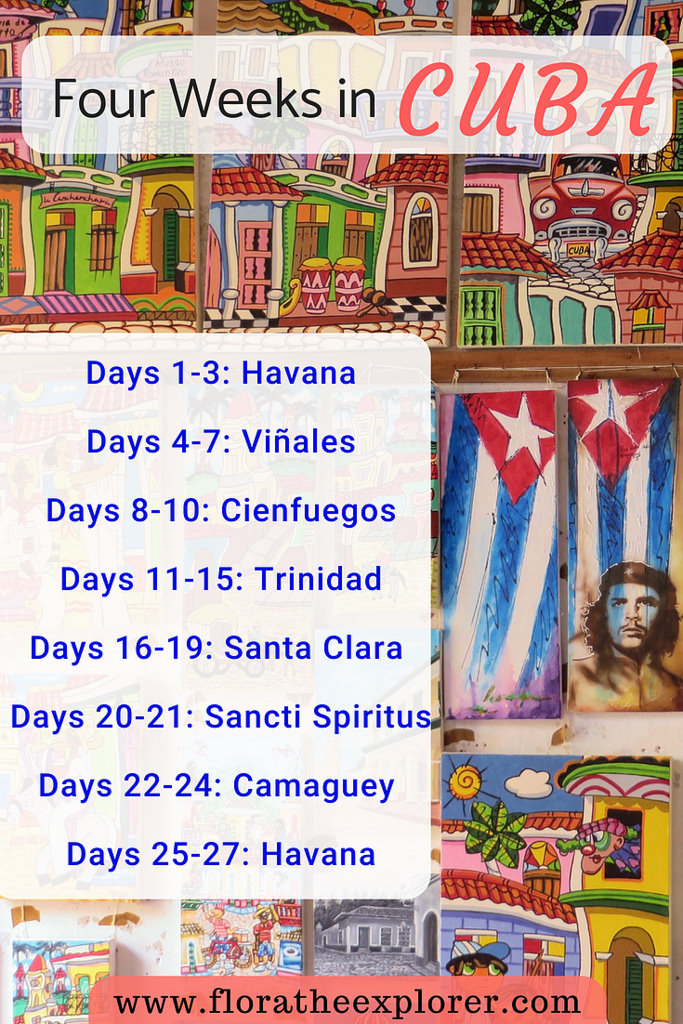
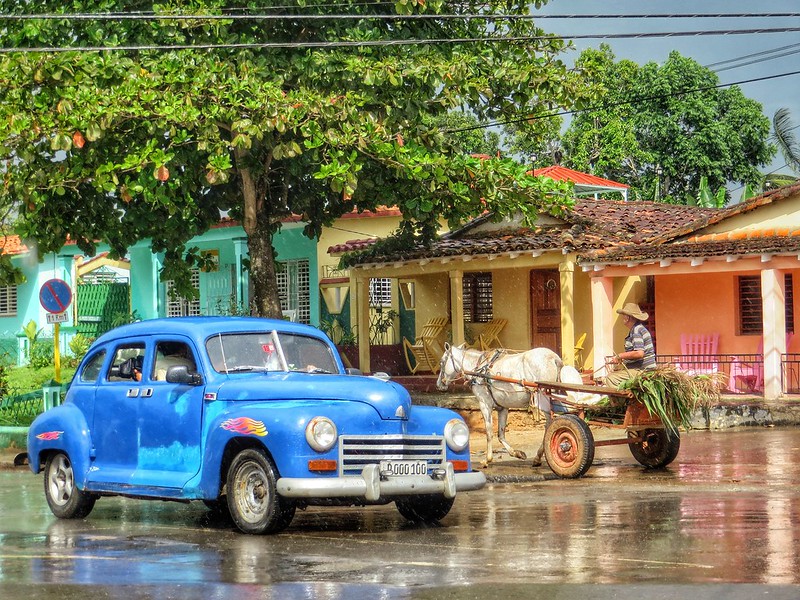
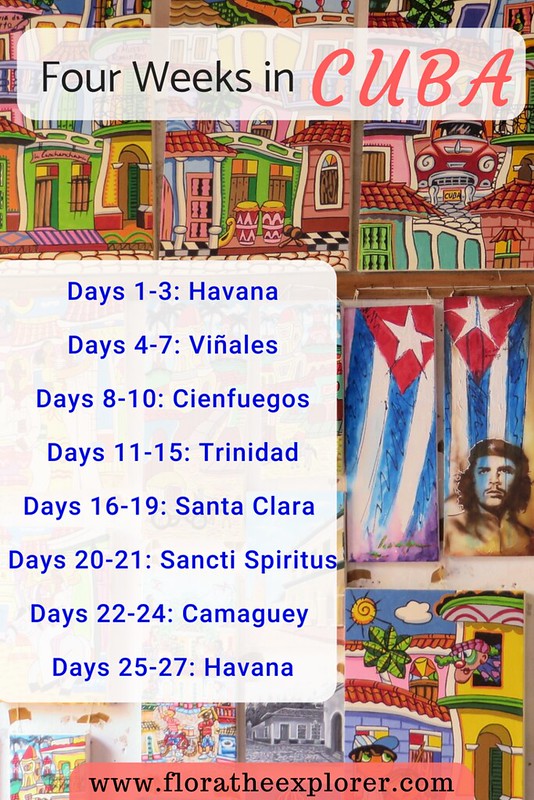
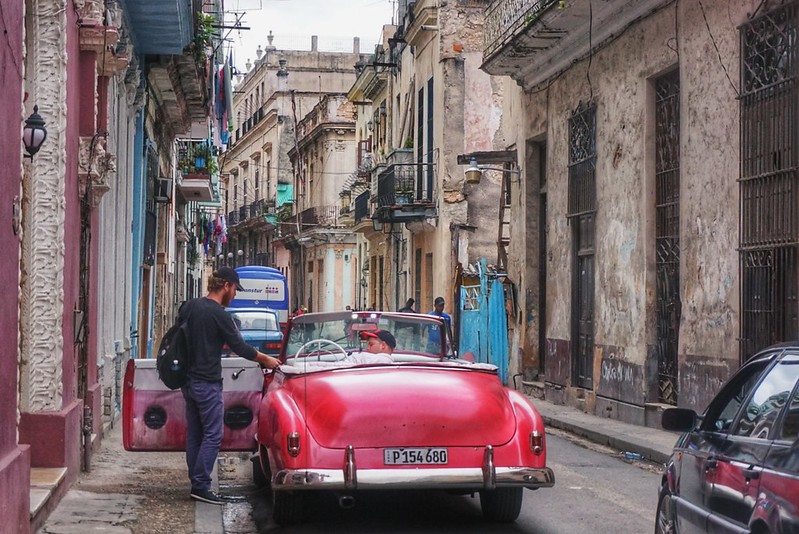
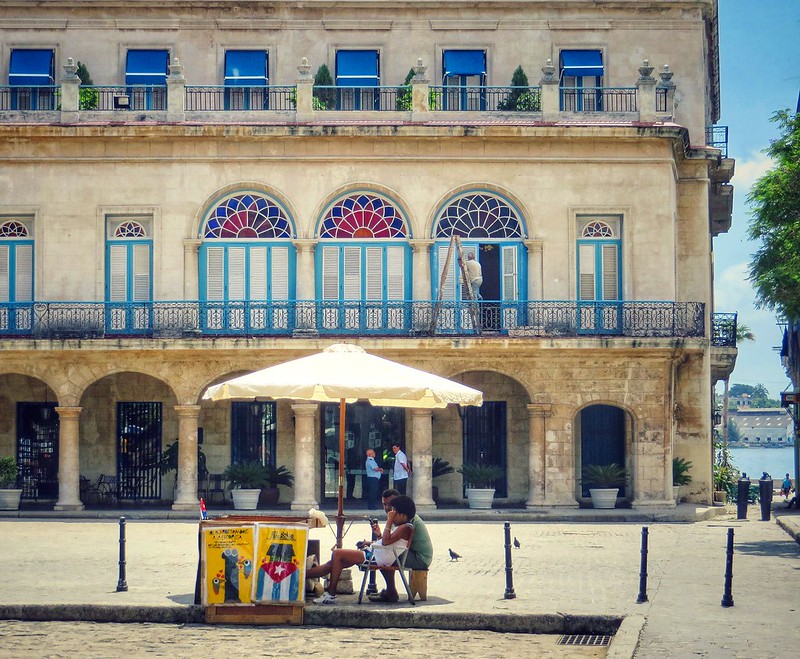
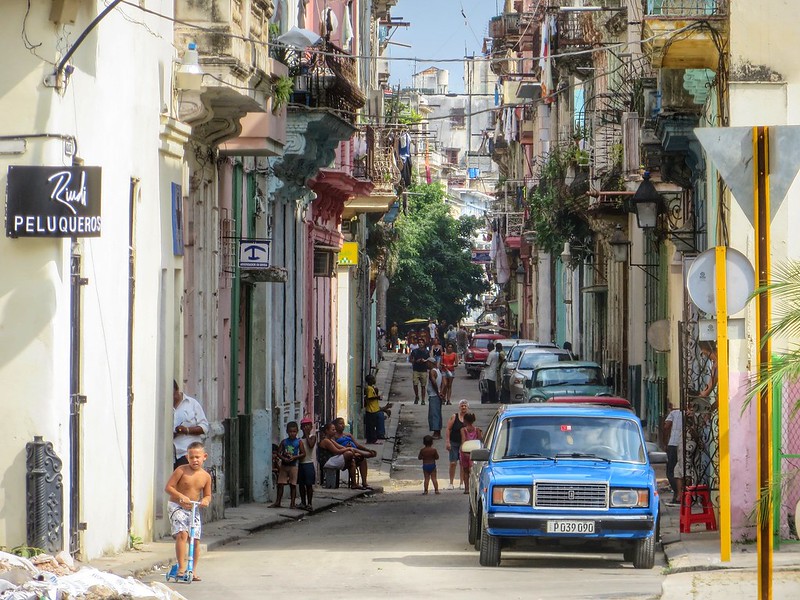

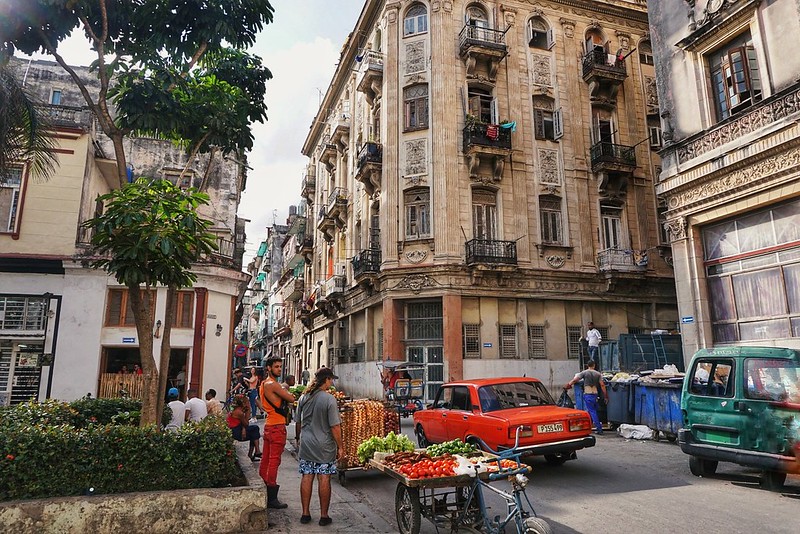
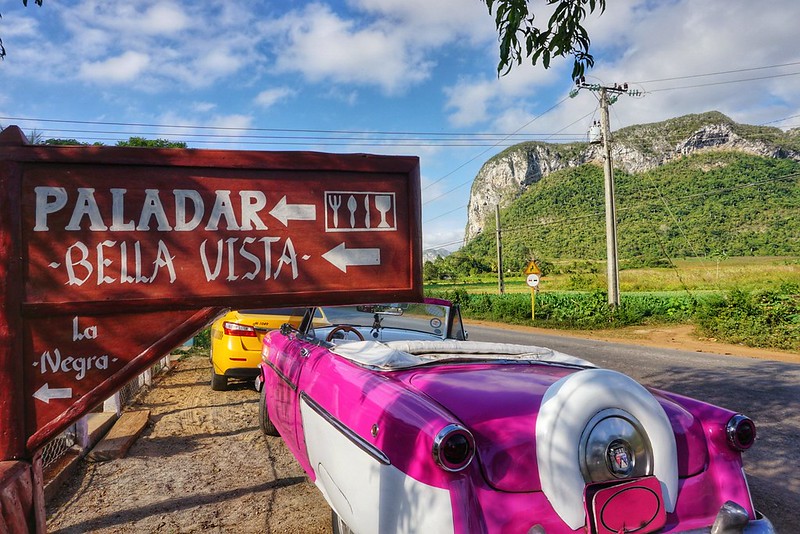

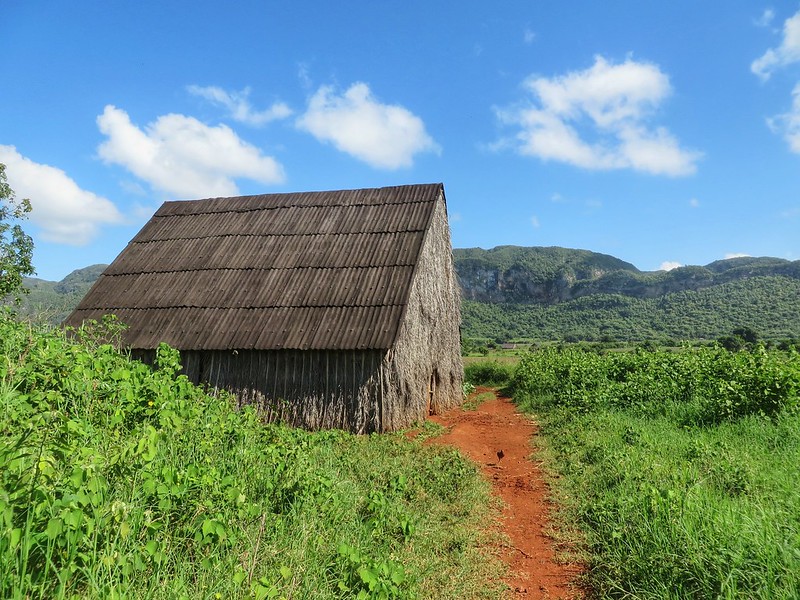
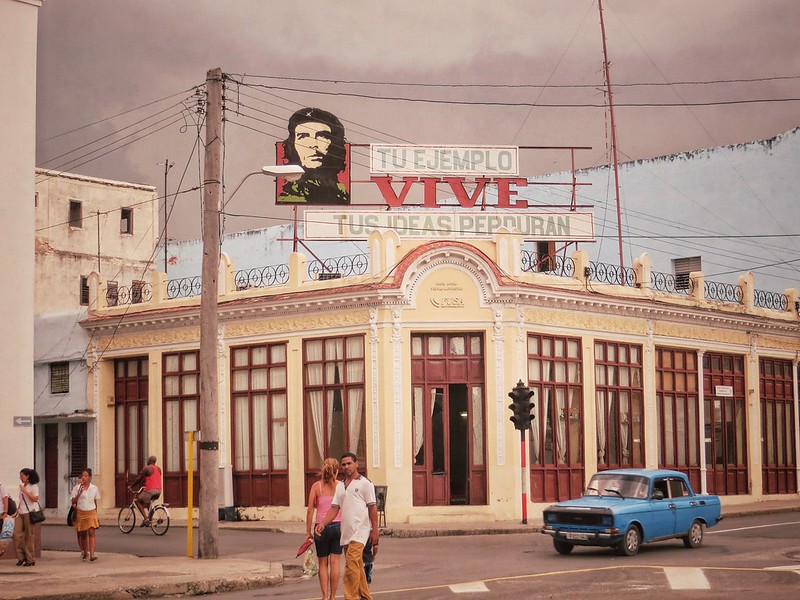
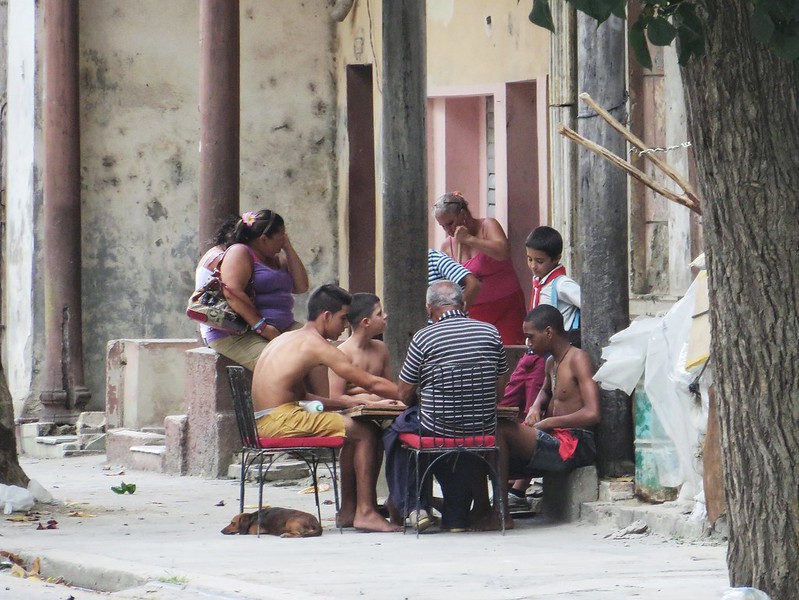

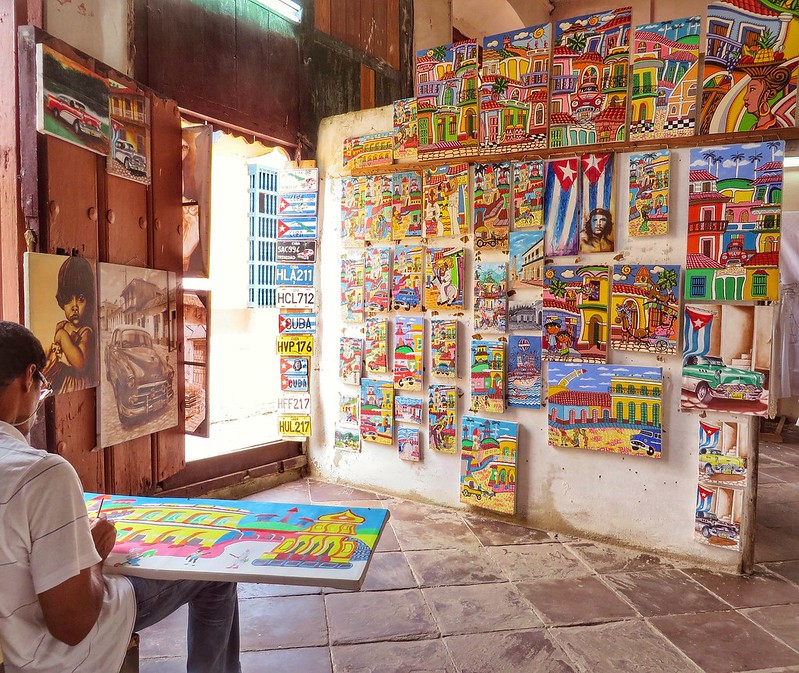
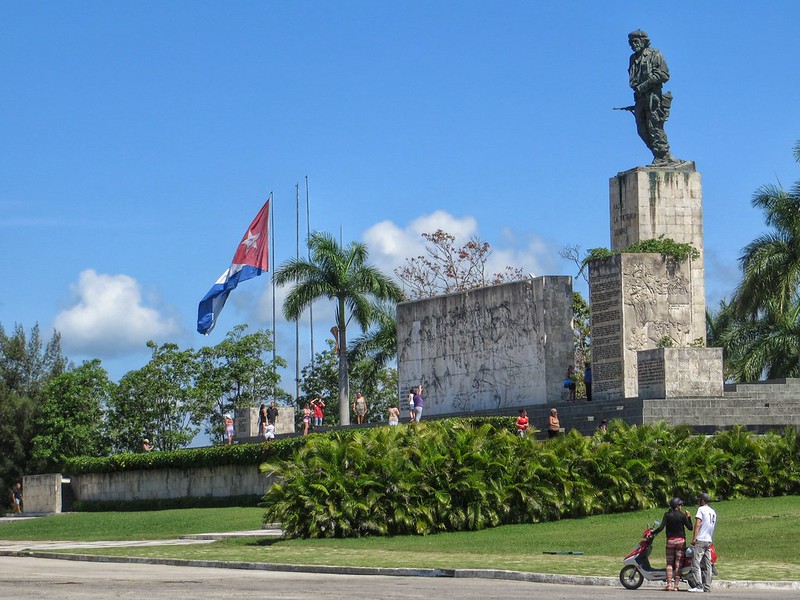
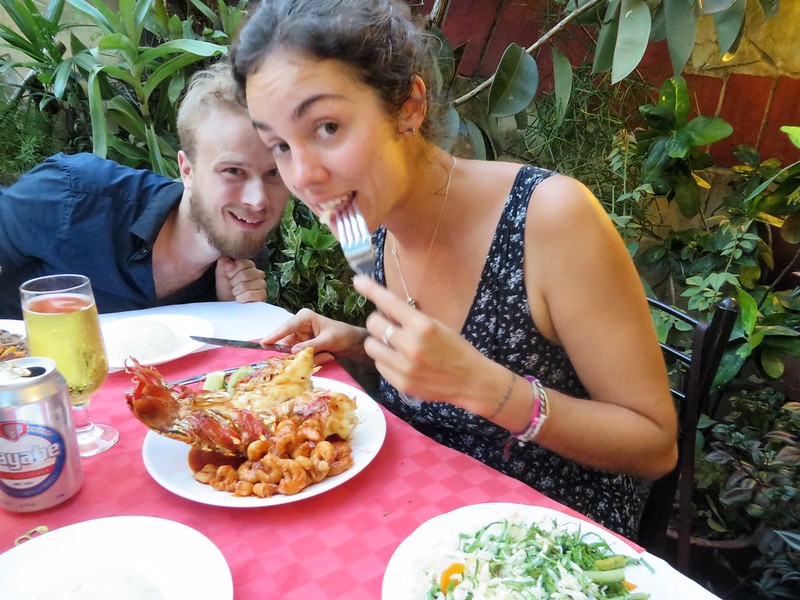
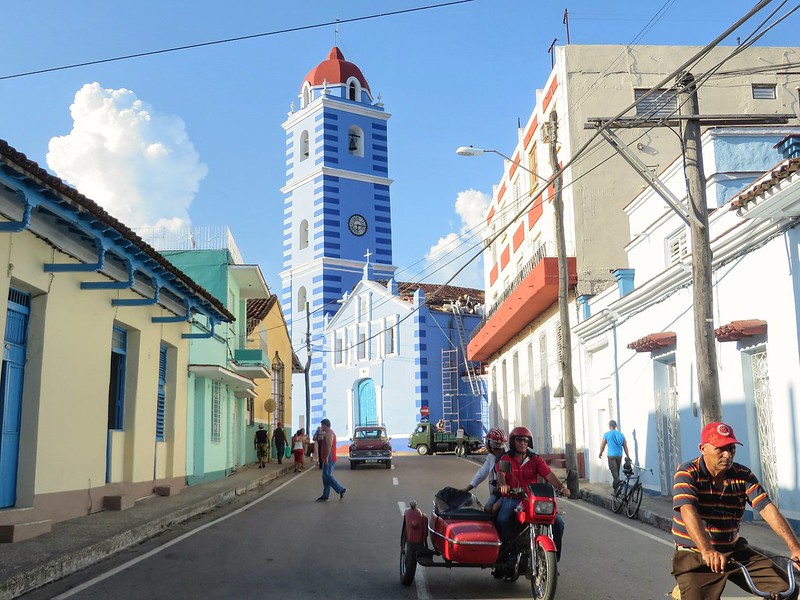

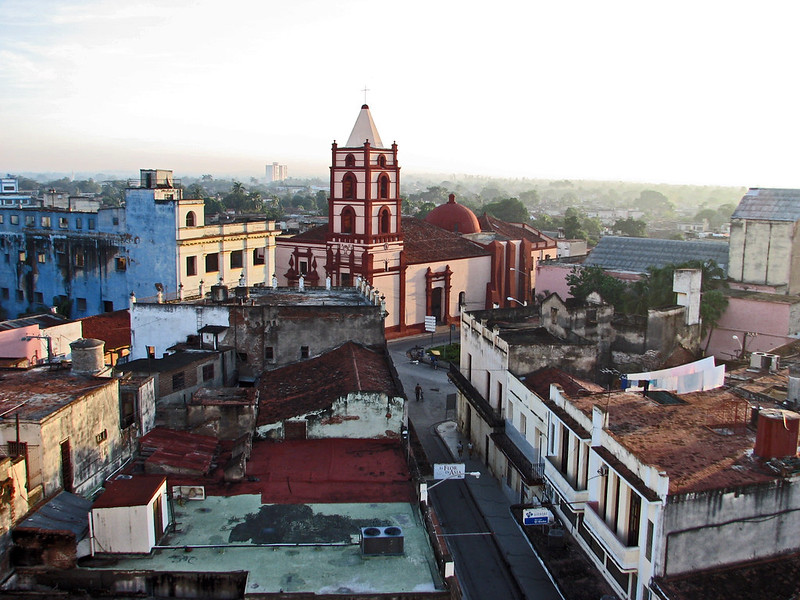

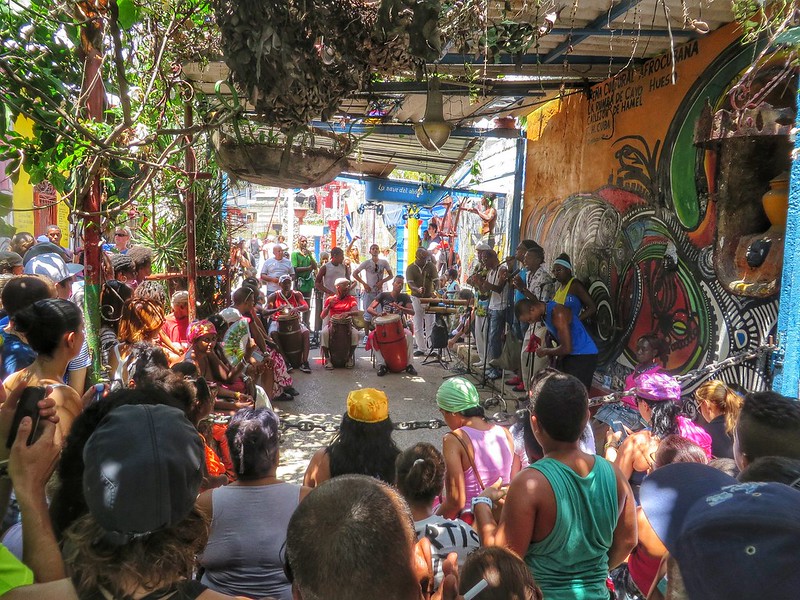
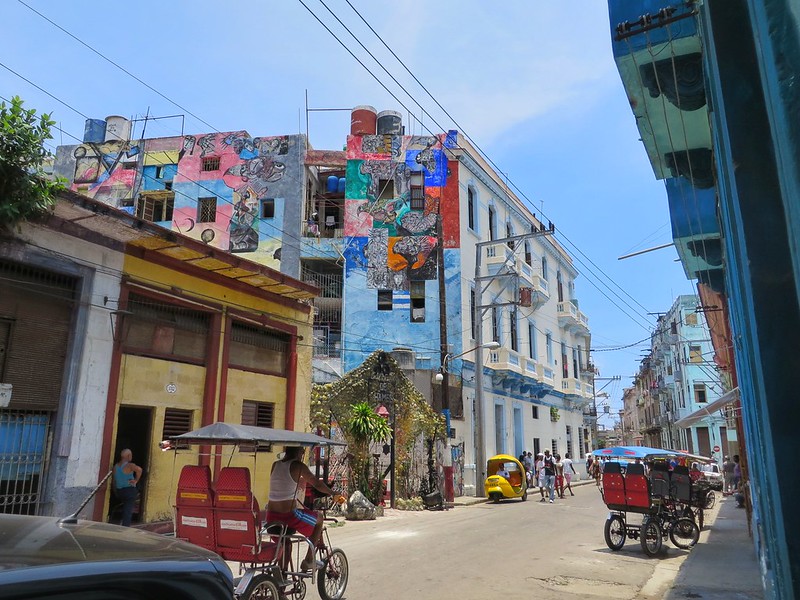
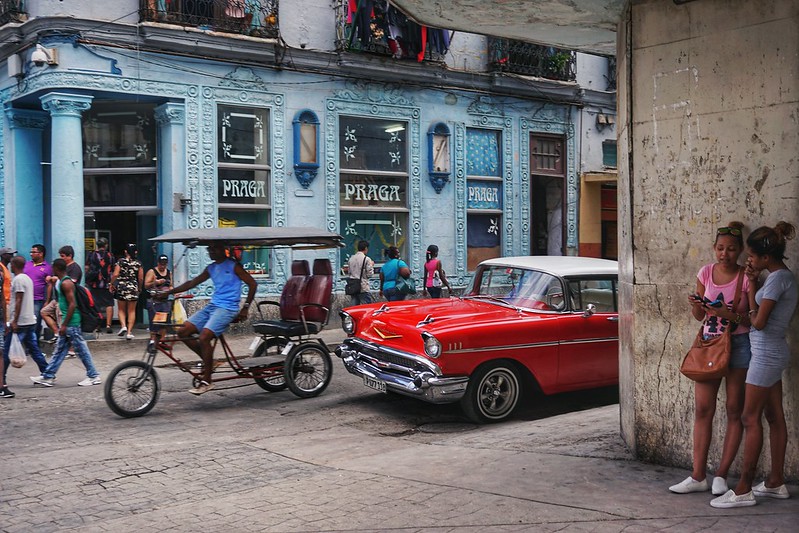
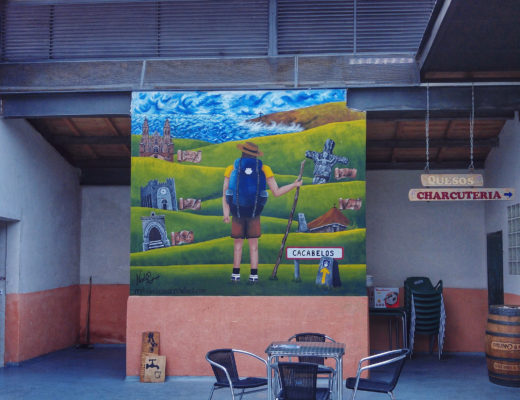

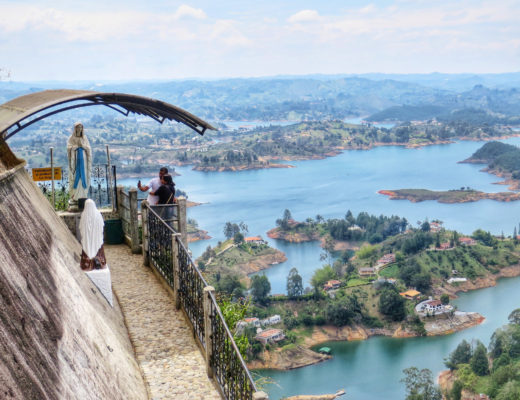
11 Comments
frederick
August 17, 2018 at 8:01 amDear Flora Thank you for your blog about Cuba it sounds an amazing country I have never been however I have a cousin who has been you gave a lot of information about Cuba and lovely photos too with plenty of in depths descriptions of where you went and what you did a truly good article thank you so much for putting your blog on line all good wishes Frederick
Flora
January 7, 2019 at 3:40 pmThanks so much Frederick! I’m glad you enjoyed reading about Cuba 🙂
pickard50
August 18, 2018 at 12:38 amFinally read your trek through Cuba, very mentally scenic because of your words, thank you for the journey
Flora
January 7, 2019 at 3:41 pmAnd thank you for reading!
C. Randen
September 22, 2018 at 2:39 amGreat article. I want to visit Cuba in the near future, now I have a great road map for how to tackle the planning. Thank you!
Flora
January 7, 2019 at 3:42 pmGreat – that’s exactly what I was aiming for! Hope you have a fantastic trip to Cuba 🙂
Sue Lavery
December 12, 2018 at 10:11 pmGreat article. I am 68 year old female thinking of backpacking Cuba this winter. Was it easy to pick Casas?
D B Randerson
December 31, 2018 at 12:43 amWow Sue. I’m also thinking of BP cuba. I’m 60. I’m three weeks there then maybe trinidad for BP there too. I’m a single male that has travelled and mountain biked Jamaica and lived there 3 years. Hawaii for 12 years. I’m in Canada since 2014 but traveled Jamaica for 7 months visiting. Most fun there but just burned out from Jamaica. Many friends told me CubaCasa travel is fairly good. Living in Canada is cold weather So you can be sure I am not impressed with snow.
Flora
January 7, 2019 at 3:43 pmHi Sue! Yes, I found it really easy to pick casas in Cuba. There are so many options, and every host has their own recommendations for casas in the next destination you’re heading to!
Lena
October 13, 2019 at 7:59 pmHi Flora, I will be traveling to Cuba soon just by myself. As I will only be staying for a week I still can’t decide if I should only visit Havana and Varadero or if I should also include Cienfuegos or Santa Clara. What do you think?
Flora
October 16, 2019 at 9:22 amHi Lena! I would suggest visiting either Viñales or Cienfuegos alongside Havana and Varadero because you’ll get a bit more of a flavour of Cuba that way. Although Havana is a fascinating place it’s definitely worth seeing another spot on the island (I haven’t been to Varadero but as it’s mainly a resort town you won’t see much of ‘the real Cuba’ there). It’s entirely possible to visit Viñales as a day trip from Havana too!
(Also I probably wouldn’t suggest Santa Clara, only because it’s pretty far from Havana)